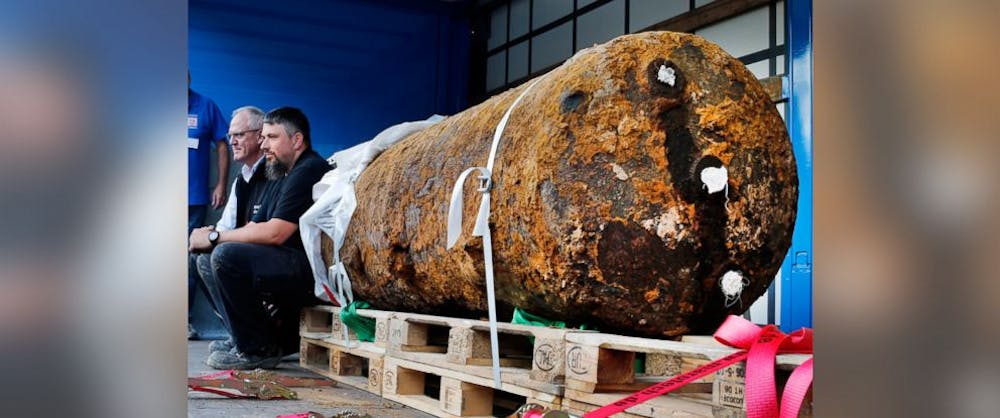By Julia Marnin
Staff Writer
The city of Frankfurt, Germany, was forced to evacuate 60,000 residents as experts worked to defuse an unexploded World War II bomb on Sept. 3, according to The New York Times.
It took more than a thousand workers to help clear the area around the bomb site, according to Reuters.

The New York Times reported that the deadly weapon weighed roughly 4,000 pounds, requiring nearby civilians to evacuate at least a mile around the area. The bomb was discovered by construction workers in a site residing near Goethe University in Frankfurt.
As a potential blast from the past, the weapon was dropped by the British Royal Air Force on Nazi Germany towards the end of the war, according to The New York Times. The bomb is known as a “blockbuster,” named after its deadly capacities.
German authorities believe the bomb’s shockwaves would have caused substantial damage to the Western part of Frankfurt, according to ABC.
The city’s hospitals and retirement homes were made top priority during the evacuation as they left Frankfurt a day before the rest of the city, according to The New York Times.
The Times also reported that this was the largest evacuation in Germany since its post-war years. However, Frankfurt was highly prepared for a successful evacuation.
“There was no worry, no rush, no kind of fright. Folks were being attentive to the demands and what they had to do,” said Antonio J. Garcia, who works in one of Frankfurt’s financial firms, according to The New York Times.
ABC reported that multiple ambulances were available to pick up residents who were unable to leave themselves.
Thousands of civilians with no where to evacuate were able to dwell in Frankfurt’s trade-fair complex, Messe, according to The New York Times. Other areas for displaced persons included Frankfurt’s Jahrhunderthalle convention center as well as a few museums. The German Architecture museum was visited by roughly 250 displaced persons.
The New York Times also reported that the German Architecture museum’s director, Peter Cachola, spoke of the unusual sight of citizens settling down for long durations with laptops or newspapers to occupy themselves as technicians worked to disable the weapon.
The defusing of the bomb was delayed because some residents refused to evacuate the area despite warnings issued by fire chiefs, according to Reuters. Those who did not cooperate were taken into police custody.
German work schedules were not affected on Monday, as bomb experts were able to finish the job after working all day on Sept. 3, according to Reuters.
To make sure the area was clear, police checked the streets surrounding the bomb site, according to the Times. A helicopter with a camera was also used for extra assurance which could detect people through heat sensitivity.
Evacuations due to newly discovered bombs from World War II are not an unusual occurrence in Germany. The New York Times reported that 15 percent of bombs that were dropped on the country during World War II did not explode. Seventy years later, roughly 2,000 tons of weapons from the war are found annually.







